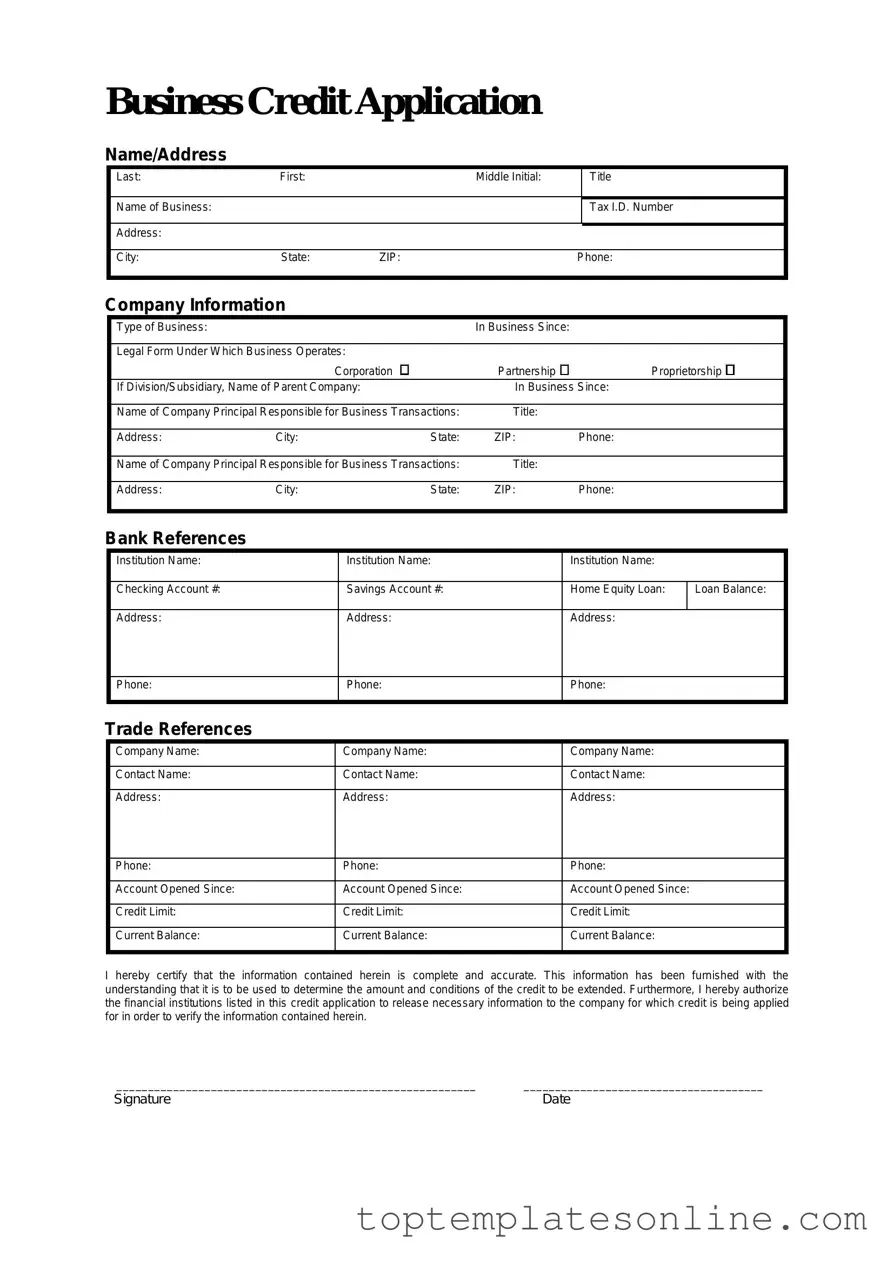When seeking to establish a business relationship with suppliers or lenders, the Business Credit Application form plays a crucial role in the process. This document serves as a comprehensive tool for businesses to communicate their financial stability and creditworthiness. Typically, the form requires essential information such as the business name, address, and contact details, as well as the type of business entity, whether it's a corporation, partnership, or sole proprietorship. Additionally, applicants must provide details about their ownership structure, including the names of owners or partners and their respective ownership percentages. Financial information is another key aspect, often including annual revenue, banking references, and existing credit relationships. The form may also ask for trade references to help assess the applicant’s payment history and reliability. By filling out this application, businesses not only present their credentials but also set the stage for potential credit terms that can foster growth and expansion.
